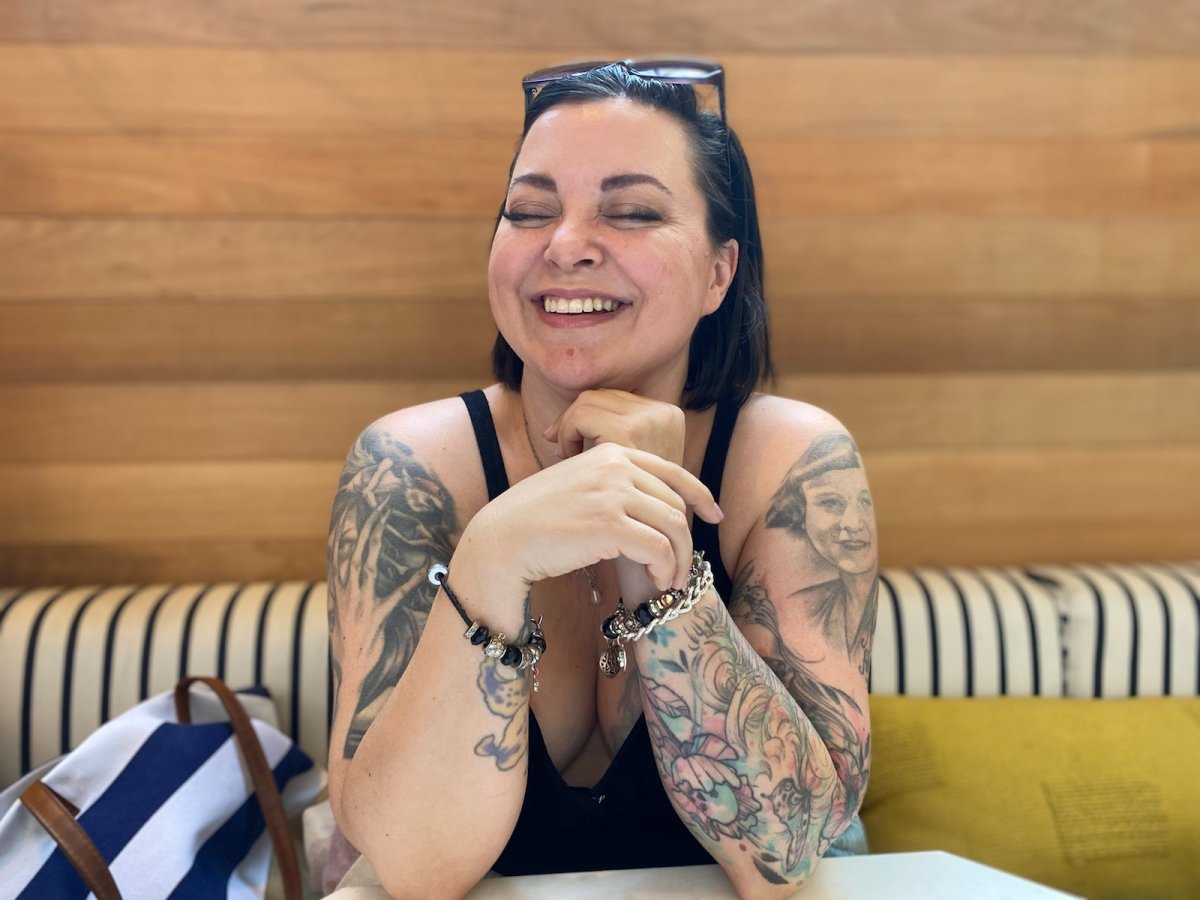As she battles stage three cancer, Kittana Ruels, 45, can’t help wondering if things would have gone differently if she had a family doctor.

Ruels, who previously battled breast cancer in 2018, gets a yearly scan but says getting tested was more challenging when she lost her family doctor after moving to North Bay from Mississauga during the pandemic.
Unable to find a new one and facing a five to 10 year waitlist, Ruels went to a walk-in clinic to schedule her yearly mammogram. The clinic, run by a nurse practitioner, video conferences doctors in to see patients.
“We don’t have health care here; it’s very short-staffed, and everybody’s struggling,” Ruels says.
She says the doctor pushed back at first, scheduling only one once she told them about her history of cancer.
The scan, which should have happened in May 2022, happened in September 2022.
“Never heard back from anyone. So to me, like most people, you think, ‘Oh, no news is good news. I must be fine. I’ll wait till next year,’” Ruels says.
“But then in June (2023), I felt a lump.”
Still, without a family doctor, she returned to the walk-in clinic on June 21.
“I did let the nurse practitioner know that I didn’t hear back for my last scan results, and she said she didn’t hear anything either. So I don’t know where along the tracks I was lost,” Ruels says.
She says North Bay Hospital has three appointments for her with a mammogram at the end of August, an ultrasound at the end of October, and a bone scan in the New Year.
“These were the days that were given to me, despite the fact that I had a lump and a history of breast cancer. So I had to push back. When I pushed back, they put me on hold and miraculously, while I was on hold, someone cancelled, so they could get me in at the end of June,” Ruels says.
Had she not pushed back, Ruels would still be waiting for one of the three scans needed to determine she had stage three cancer.
Feeling concerned about not getting her results, she asked how to access her records directly through the hospital if a doctor did not follow up.
“I picked up my records (on July 18) and read for myself that I had cancer. I found out by sitting in the waiting room at my son’s appointment that I had cancer again. No one called me,” she says.
But that’s not all. When she picked up those records, she also came across the scan results from the year before.
“That’s where I read on the Sept. 22, (2022), one that the findings were highly suspicious, and they wanted to follow up in six months. But of course, there wasn’t a follow-up.”
Finding out this could have been addressed sooner has left Ruels feeling angry.
“I feel like we’re slipping through the cracks, and that’s dangerous because lives depend on not slipping through the cracks; lives depend on these follow-ups,” she says.
Ruels is in the midst of an aggressive battle with stage three breast cancer, having just undergone a double mastectomy, and soon to face chemotherapy and then radiation.
“I do believe that had we caught it sooner, I might have been able to avoid this nasty chemotherapy that I’m about to face.”
This is a battle, she says, that is made all the more difficult if you don’t have a family doctor.
“You can’t do this on your own. I can’t navigate the system,” Ruels says.
“Most people don’t know how to follow up. They don’t know who to call. They don’t know how to navigate that system until you need it.”
With the help of friends and family, Ruels says she convinced a doctor to take her on part-time to start scheduling what she needed for treatment, and then she found a doctor to take her on full-time.
“Now I do have a family doctor, but it took my life being at risk to get a doctor, and that shouldn’t be how it is,” Ruels says.
Sarah Newbery, a past president of the Ontario College of Family Physicians and practising family doctor, says Ruels’ story highlights the importance of having a family doctor.
“When people have a family physician who provides continuity of care over time, we know that there are better health outcomes both for individuals and at a population level,” she says.
Newbery says there are currently over 2.2 million people living in Ontario without a family physician, up from 1.8 million reported by the college in November of last year.
She notes that twice as many family physicians left practice during the pandemic relative to the historical average.
Ruels feels those in the north are being forgotten.
“I feel like we’re being slighted. It’s like no one cares. Not the doctors — the doctors care, the nurses care, and the people in medical care. It’s those who are in control of funding and those who are looking at the situation but not making anything change,” she says.
“Somewhere, someone needs to take the job on and make sure that people in northern Ontario and all over Ontario have access to the medical help that they need. It infuriates me that no one’s doing that.”
The Ontario Ministry of Health says since 2018, the province has grown its health-care workforce by over 63,000 new nurses and 8,000 new physicians, of whom 1,100 were family physicians.
But Newbery says it’s still not enough when looking at the number of doctors leaving the profession.
The ministry also says it is working to expand medical schools, adding 14 undergraduate and 22 postgraduate seats at the North Ontario School of Medicine and expanding the Northern Ontario Resident Streamlined Training and Reimbursement program, which removes barriers to training more physicians in Northern Ontario.
For Ruels, it’s too late to reverse the impact of not having a family doctor, but she hopes that speaking out can help inform others.
“I want people to know that no news doesn’t mean good news, that if you’re not hearing anything, follow up and know that you can go and pick up your records from the hospital,” she says.
“Follow up because your life could depend on it, and if you don’t have a doctor, then no one’s watching out for you; you’ve got to do it for yourself. Don’t take no for an answer; push back. If they say they don’t have the availability, fight because you’re fighting for your life.”



Comments